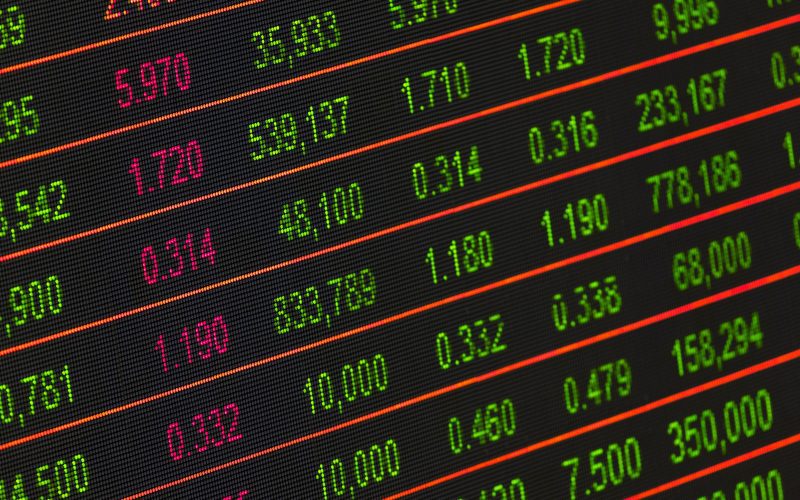The Fed’s rate hikes are a hot topic in the world of finance and economics. With the US economy showing signs of weakness in Q1 2019, many are asking if these rate hikes were too much too soon. In this blog post, we will explore the impact that these rate hikes had on the US economy and what it means for businesses and consumers alike. From rising interest rates to tighter lending standards, we’ll take a closer look at how these changes affected everything from housing prices to stock markets. So sit back, relax, and let’s dive into the world of monetary policy!
The Fed Rate Hikes
The Federal Reserve, or the Fed for short, is responsible for setting monetary policy in the United States. One of their key tools is adjusting interest rates, which can impact everything from borrowing costs to inflation. In late 2018 and early 2019, the Fed raised interest rates several times in an effort to prevent inflation from getting out of control.
These rate hikes were not unexpected – in fact, many economists had been predicting them for some time. However, they did catch some businesses and consumers off guard. Suddenly, it became more expensive to borrow money for things like buying a home or starting a business.
The goal of these rate hikes was to slow down economic growth and prevent inflation from spiraling out of control. The hope was that by raising borrowing costs, people would be less likely to spend money on big purchases like homes or cars. This could help keep prices stable and avoid runaway inflation.
However, critics argue that these rate hikes may have gone too far too quickly. With signs pointing towards slower economic growth in Q1 2019 and beyond, it’s possible that the Fed misjudged how much tightening was needed at this point in time.
Though, there’s no denying that the Fed plays a critical role in shaping our economy through its use of monetary policy tools like interest rates. Whether these recent rate hikes will ultimately prove helpful or harmful remains to be seen – but one thing is clear: we’ll all be feeling their effects for years to come!
What effects did the Fed Rate Hikes have on the US Economy?
The Fed Rate Hikes have had a significant impact on the US economy, affecting various aspects of the financial system. One of the major effects is that it has led to higher borrowing costs for households and businesses. This translates into lower consumer spending and business investment which can slow down economic growth.
Additionally, higher interest rates also discourage investors from investing in stocks as fixed income investments become more attractive. As a result, stock prices may decline leading to reduced wealth for investors.
The housing market has not been spared either with rising interest rates making mortgages less affordable for potential homebuyers. Consequently, this has slowed down demand in the real estate sector resulting in lower construction activity and job creation.
Furthermore, emerging markets are also affected by Fed rate hikes through capital flight as investors seek out better returns in developed countries like the US causing currency devaluations and inflationary pressure back at home.
In summary, while there were benefits to raising interest rates such as controlling inflation and supporting long-term stability; some argue that these positive impacts did not outweigh the negative economic consequences experienced during Q1 2019 due to high-interest rates imposed by The Federal Reserve Bank (Fed).
The Economic Impact of the Fed Rate Hikes
The economic impact of the Fed rate hikes has been a topic of much debate and discussion in recent months. While some argue that the hikes are necessary to keep inflation in check, others believe that they have had a negative impact on the economy.
One of the main ways that the Fed rate hikes have affected the economy is by making borrowing more expensive. This can make it harder for businesses to invest and grow, which can ultimately lead to slower economic growth.
In addition, higher interest rates also tend to attract foreign investors, which can drive up demand for US dollars and cause our currency to appreciate relative to other currencies. This can be good news for consumers who want cheaper imports, but bad news for exporters who face stiffer competition from overseas.
Furthermore, rising interest rates can also put downward pressure on stock prices as investors look for safer investments with better returns. This means that companies may find it harder to raise capital through stock sales or bond offerings.
While there may be some benefits associated with raising interest rates (such as keeping inflation under control), there are clearly downsides as well. It will be interesting to see how policymakers respond in light of these tradeoffs going forward.
Conclusion
The Fed rate hikes had a significant impact on the US economy in Q1 2019. The higher borrowing costs led to slower economic growth and weaker consumer spending, which affected various sectors of the economy. Although the Fed has since cut interest rates to mitigate some of these effects, it remains to be seen how long it will take for the economy to fully recover.
As we move forward, it’s important for policymakers and investors alike to closely monitor economic indicators and adjust their strategies accordingly. While interest rate hikes can help control inflation, they must be balanced against potential negative impacts on growth and employment.
Ultimately, finding this balance is crucial for ensuring stable economic growth and prosperity over the long term. By understanding both the benefits and risks of monetary policy decisions like interest rate changes, we can work together towards building a stronger US economy that benefits everyone.











